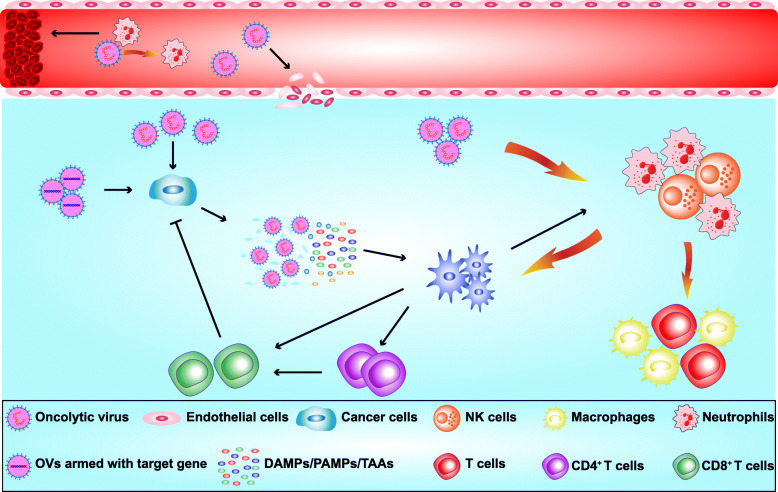Fig. 1.
Underlying mechanisms responsible for the antitumor effects of oncolytic viruses (OVs). (1) OVs can directly infect and lyse cancer cells. (2) OVs infect and lyse vascular endothelial cells, and recruit neutrophils, which promote coagulation and thrombosis to destroy blood vessels and inhibit angiogenesis. (3) OVs recruit dendritic cells (DCs), macrophages, neutrophils and T cells into the tumor microenvironment thus transforming “cold” tumors into “hot” tumors. (4) Lysed cancer cells release DAMPs/PAMPs/TAAs, which are recognized by DCs resulting in activation of CD4 + T and CD8 + T cells to kill cancer cells. (5) OVs can be armed with transgene target gene expression, which enhances the antitumor effect

